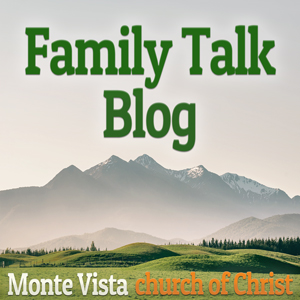Acts chapter fifteen contains enough material on fulfilled prophecy and establishing presidents to keep a Bible student busy for months. The time of the travels and discussions is about 20 to 21 years after Christ rose from the grave and the apostles preached the first sermons on Pentecost. The church has spread through Judea, Syria, Galatia, and other lands further away. Jesus’ death ended the sacrificial portions of The Law of Moses. The Roman army destroyed the legalistic parts of Moses’ Law by destroying Jerusalem and the Temple in 70 CE, but Jews still observe festive traditions. At the end of Paul’s first preaching journey, the question of whether some covenant laws applied to the Gentiles needed to be discussed. And although Paul, an apostle with the power of the Holy Spirit, could have settled the matter in question, the questions required answers from their reported source, the Jerusalem church. Therefore, the Jerusalem conference assembled to confront the claims and teachings of the Judaizers.
The church in Antioch sent Paul and Barnabas to Jerusalem to investigate the false claims that Paul and Barnabas contested. They arrived in Jerusalem and received warm greetings. They reported what they taught and the Gentile’s belief in that teaching without mentioning circumcision. Paul later writes, “Yet not even Titus who was with me, being a Greek, was compelled to be circumcised” (Galatians 2:3). Everything Paul reported about his preaching and the baptism of the Gentiles brought no criticism from the other apostles and elders (Acts 15:4). Then the source of the false teaching spoke up, “Some of the sect of the Pharisees who believed rose up, saying, “It is necessary to circumcise them, and to command them to keep the law of Moses” ( Acts 15:5).
One point of these Pharisees’ conclusion applies to almost every error the church has ever confronted. Those drawing the conclusion and making the statement of error did not understand the law, practice, or covenant under discussion. Those trying to force circumcision on all believers did not know that it pertained only to Abraham and his descendants by blood inheritance, and people adopted into that inheritance. Writing of that covenant with Abraham, Paul said, “And he received the sign of circumcision, a seal of the righteousness of the faith which he had while still uncircumcised, that he might be the father of all those who believe, though they are uncircumcised, that righteousness might be imputed to them also, and the father of circumcision to those who not only are of the circumcision, but who also walk in the steps of the faith which our father Abraham had while still uncircumcised” (Romans 4:11-12). Regarding the faith of a believer in Jesus Christ and His blood, God said through Jerimiah, “Behold, the days are coming, says the LORD, when I will make a new covenant with the house of Israel and with the house of Judah” (Jeremiah 31:31). As Jesus instituted the bread and fruit of the vine during the last Passover, He said, “For this is My blood of the new covenant, which is shed for many for the remission of sins” (Matthew 26:28).
Today, both Jew and Gentile are free from the covenant of circumcision through Abraham and the covenant of the Law through Moses. We voluntarily place ourselves under the Yoke of Christ (Matthew 11:28-30) when we join Him in baptism (Romans 6:3-6). Like the Pharisees of the first century, many people today do not want to rid themselves of the baggage they drag along with them. We are free from sin in Christ, but evil tries to drag us back. The traditions learned in other religions may be pleasant and can often become an object of worship when false beliefs have glorified things and celebrations rather than the God and Savior that deserve continuous worship. Many set aside a day to honor the birth of a babe and another day to praise the resurrection of the Christ but ignore Him for the rest of the year.
There are two features of this account by Luke that may need extra thought. First, Luke does not mention any of Paul’s letters in this narrative. But it is plain from Galatians 2 that Paul refers to this discussion and subsequent conclusions. Also, the heresies that Paul warns about in Colossians 2 would include the Judeisres from Jerusalem and the Greek philosophies present at the time. The second feature to consider is the “Mass Communication” technique used to get the conference decisions out to the world. Letters became the way of communication within a kingdom that spread worldwide. The Old Testament applied to a single group of people in a relatively compact territory. Reading the Law to the people occurred weekly in synagogs and on commanded feast days.
Jeremiah’s prophecy indicated the new covenant would be written on the heart rather than stone and parchment. “I will put My law in their minds, and write it on their hearts; and I will be their God, and they shall be My people” (Jeremiah 31:33). Following the example set by the apostles and elders in Jerusalem, the communication media of the church became letters. Though we do not have original documents, thousands of copies and quotes are in the letters from first and second-century writers.
How many copies of God’s word do you have?
